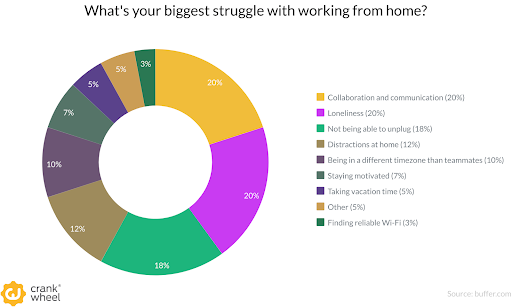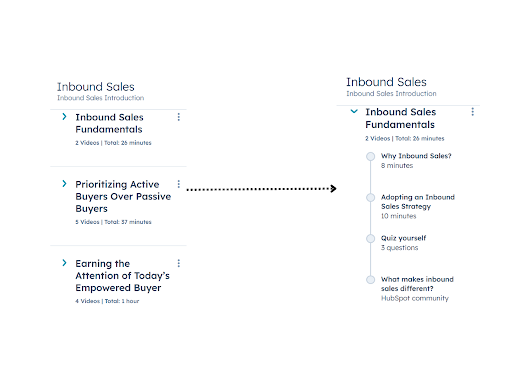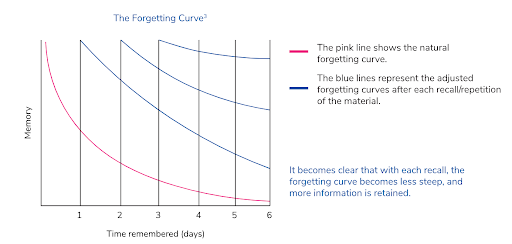10+ Key Strategies for Remote Sales Training
“Sales is like dating someone”, says Simon Sinek
Let me give you some perspective on the statement. Imagine going on a date and only talking about how great you are, assuming you’ll get more dates. That wouldn’t work out well, would it? It’s the same in sales – just sharing your success numbers won’t guarantee sealing the deal.
It’s important to know what the customer needs and can afford. You have to connect with them on a personal level through genuine conversations. And this doesn’t change whether you’re selling remotely or in person.
However, training remote and office sales teams is different.
Selling remotely comes with its own set of challenges for sales leaders, including:
- Lack of face-to-face interaction
- Prospects struggle with technology adoption
- Time Zone Differences
- Tackling distractions
You can overcome these challenges by having effective remote sales training strategies.
In this post, I’ll go over 10 important strategies from my experience at DesignRush to help sales leaders with remote sales training.
Shortcuts:
The Essential Strategies for Remote Sales Training
- A toolkit of interactive online platforms for active + passive communication
- Share an extremely structured sales training program
- Supplement these lessons with downloadable video resources for future reference
- Offer development opportunities such as webinars and virtual workshops
- Include role-playing exercises to simulate trust-building scenarios in remote sales.
- Provide the right remote sales tech stack and training around it
- Pay attention to time zones when setting up training
- Gamify the sales process to influence healthy sales competition
- Prioritize Data Tracking
- Revisit your virtual sales methods & resources from time to time
- Apply the 80/20 rule to remote sales training
- Expect people to forget, hence provide ongoing training
- Adopt a different approach for experienced and inexperienced folks
- Create a positive environment where learners are supported
10+ Essential Strategies for Remote Sales Training
Let’s look at the top (my favorite) strategies for remote sales training.
1. A toolkit of interactive online platforms for active + passive communication

Communication is the key to human connection and the transition to remote settings has had a huge (negative) impact on it. 20% of employees reported that communication challenges have caused them to get reprimanded, demoted, or even fired.
When the task is to train remote teams, you cannot fall short in this area.
So how do you compensate for the lack of physical presence for remote sales training?
The answer is simple, ditch traditional training methods and tools (calls & emails).
Interactive tools are the most efficient solution to tackle this challenge. Adopt a techstack of interactive online tools, such as screen sharing software, for real-time and asynchronous communication to keep pace with evolving sales techniques.
While tools for real-time communication in training are obvious and come primarily, I can say from my personal experience, never overlook the importance of tools for passive communication—they are equally significant.
These tools give sales reps a way to reach out with their extra questions whenever they need to, helping them overcome the difficulty of lack of support.
As in a traditional face-to-face training setting, the sales lead could observe the team’s physical gestures, expressions, and engagement levels to gauge their understanding and address any concerns immediately. However, in a remote setting, this visual feedback is absent, making asynchronous tools crucial for post-meeting queries and discussions.
2. Share an extremely structured sales training program
Microlearning is the new trend. It is all about serving bite-sized modules that are concise and easy to understand. It’s perfect for busy folks who want to learn something new without spending too much time. It offers a novel approach to traditional learning methods.

The psychology behind the hit of microlearning is the reason why you should have an extremely structured sales program. It is all about not overwhelming the reps, and concisely delivering correct information, including short modules for organized learning.
A well-organized training program with scheduled sessions also ensures that learning is systematic and participants progress step by step.
Understand it better with the HubSpot Inbound sales course example;

Caption: This is a HubSpot course on Inbound Sales
This course is split into main topics and smaller sections, arranged in logical order.

Caption: The course is split into border themes and subsections.
Not only this particular course but almost all their courses are split into smaller sections to appeal to the audience.
In a remote setting, a structured program comes in pretty handy. With a hyper-directed program, you solve many doubts beforehand. With maintaining an easy structure, you can also make it dynamic with
- Training videos on sales techniques
- Product knowledge resources
- Slides
- Presentations
- Quizzes
- Exercises on practicing sales calls through role-playing
3. Supplement these lessons with downloadable video resources for future reference
Remote work environments are not stable all the time. Sometimes your reps are in the middle of chaos as they are sharing workspaces with their family members, friends, or pets who need constant attention. But to be fair, even those who are living alone can get distracted.
Gloria Mark, author & Chancellor’s Professor @ UC Irvine, says “If we look at work in terms of switching projects, as opposed to the micro view of switching screens, we find people spend about 10½ minutes in any work project before being interrupted — internally or by someone else — and then switch to another work project,”
I heard all sales leaders saying in one voice that they can not afford these distractions while providing training.
So I’ll say, accept it! Make peace with the fact that it is going to happen. Sometimes the reps might not focus on the crucial details, or forget them easily.
That is the reason why you should not solely rely on real-time online sessions for remote sales training. Some downloadable resources are important for reinforcement, allowing sales professionals to refresh their knowledge, revisit key concepts, and strengthen their skills at any time.
Moreover, these resources contribute to a more self-paced and personalized learning experience. This will also contribute to the 80/20 effect (which I will discuss later).
For this strategy, you can
- Record your online sessions and later share them with the team
- Organize videos into specific folders based on topics or modules.
- Use a training portal or learning management system (LMS) for centralized access and tracking.
- Prioritize concise content (for microlearning).
Offering these downloadable resources also helps with providing consistent training.
Instead of overwhelming the team with all the info together, break it into smaller parts and give them bit by bit in regular downloadable lessons. This helps them learn steadily, remember better, and stay interested in the training. It is one of those secret success formulas.
When asked about one habit that makes him more productive, Dominic Monn, founder of MentorCruise says, “I don’t have a good productivity hack. All I can say is that I work incredibly consistently. So while others may be running a sprint and burning themselves out, I’m able to keep going at this pace forever. Core to this is a good productivity system, but I’d say it’s also part of the mindset that “getting 1% better every day” yields more success than trying to be great, once.”
4. Offer development opportunities such as webinars and virtual workshops
Every now and then you should adopt different approaches for training your sales reps.
The development of any employee happens when leaders guide, communicate, listen, and inspire actions.
And webinars are a dynamic option for this.
They are not just average online seminars with participants but with dynamic features (such as screen sharing, live chat, Q\&A tools, streaming video recordings, etc). It helps in leaving an impact in remote sales training, as with all these features the session becomes more interesting. It also leads to better information retention, as 95% of marketers say that webinars improve training and learning retention.
Use them to provide real-time insights on market trends for discussing their impact, product updates for better comprehension, and specific sales strategies. You can bring in an SME for a few webinars. This lets the sales team talk directly with the expert to really get what they need and clear up any questions they have.
Virtual workshops are actionable and help with active engagement. Practice real sale scenarios in these virtual workshops, it will help you know the real ground about how much more work is needed on each rep individually.
Recommended read: Deminars: How to Give Your Sales Team the Edge
5. Include role-playing exercises to simulate trust-building scenarios in remote sales.
Role-playing provides a practical and immersive learning experience. Instead of just talking about it, you can use role-playing exercises to show your expertise.
Role-playing exercises certainly offer a safe space for individuals which helps them push beyond what’s expected of them. While doing this exercise, ask reps to experiment with different trust-building strategies, provide them constructive feedback, and refine their techniques. This iterative process contributes to the development of a more confident and effective sales team.
Here are some top role-play scenarios to consider in remote sales training.
- Discovery
- Elevator pitch
- Remote selling
- Product demo
- Objection handling
- Negotiation
- Competition
- Customer storytelling
6. Provide the right remote sales tech stack and training around it
Simply put, a sales tech stack is the set of tools and technologies that your sales team uses to do its job. The key component of adopting a sales tech stack is to create a seamless training environment.
A remote sales tech stack is going to be part of your rep’s work routine. It will help them save, enabling them to reach out to more leads and engage with prospects effectively. I can not stress enough why choosing the right remote sales stack is the first work you need to do.
Some must-have tools for your sales teams are
- Customer relationship management (CRM)
- Prospecting tools
- A Screen Sharing tool
- Sales productivity tools
- Sales intelligence software
- Scheduling tools
- Product demo and meeting tools
- Revenue platforms
And remember, showing up is the first step; making it count involves putting in the effort to be genuinely useful. Similarly providing tools is not enough, it is important to not miss out on providing comprehensive training around the remote sales tech stack.
Sales professionals need to be proficient in using these tools effectively to maximize their impact. Training should cover not only the basic functionalities but also advanced features that can enhance efficiency and provide a competitive edge.
7. Pay attention to time zones when setting up training
In remote sales training, it is always a smart move to first analyze your team members’ time zones and schedule the meetings and submissions accordingly.
Imagine you’re hosting a virtual meeting for remote sales training, and your sales team is spread across different parts of the world. Without considering time zones, participants might receive invitations for sessions that are scheduled at inconvenient or even impossible hours for them. This not only disrupts their work-life balance but also hinders their ability to fully engage in the training.
And this is not something you can label as an excuse. There is a direct relationship between time zone and productivity. This is often linked to a person’s “active hours” – the times of the day when they are most alert, focused, and energized.
When you align training activities with each team member’s local time, you enhance their chances of participating actively and contributing effectively. This approach also shows your consideration for individual well-being and maximizes the quality of interaction during training sessions.
**Recommended read: **Remote Sales Productivity Hacks: Time Management Techniques
8. Gamify the sales process to influence healthy sales competition
Interactive content sees 52.6% higher engagement than static content, and games are one of the most important interactive content types. Many major brands nowadays are actively using games for marketing & sales.
When you gamify the sales training, it involves earning points, badges, and achievements for accomplishing sales tasks.
Gamification uses a simple trick from psychology called positive reinforcement. This means giving a reward when someone does something good. It not only makes sales activities enjoyable and engaging.
It also promotes healthy competition. Colleagues share insights, strategies, and successes, fostering a supportive team environment. And, sales leaders also get immediate feedback, creating a real-time performance measurement system.
However, one challenge with gamification remains the budget allocation. The process requires custom development for building and designing several games.
Organizations should carefully weigh the costs against the potential returns and consider scalable solutions to make gamification a sustainable and cost-effective strategy for driving positive outcomes.
9. Prioritize Data Tracking
Victor Karpenko, founder of SeoProfy, says, “Research and get the right data, don’t just trust someone’s authoritative opinion. First, you collect the right data, then you do dashboards, trying to understand what’s going on and why, and only then put together a plan.”
Just as analyzing customer data identifies prospects and effective sales techniques, sales managers benefit from comprehensive team data. It gives you the correct direction.
In a sales team, everyone is different. Some may have less experience, and others may remember things better. Some learn well online, while others prefer using resources alone. With data tracking only you can make your remote sales training work better for everyone.
Also not to forget, in remote work, you miss out on casual conversations. These conversations are important for leaders to understand their team better and for team members to feel more supported. In this ecosystem, tracking sales KPIs (for training) enables you to come up with actionable insights, going beyond simple scores, and addresses nuanced areas for development.
Recommended read: 6 Ways To Create Data-driven Sales Strategies
10. Revisit your virtual sales methods & resources from time to time
In a remote environment, it’s crucial to keep adapting to stay ahead.
From time to time, keep checking and updating virtual sales methods and resources to stay in tune with industry trends, new technology, and changes in what customers prefer.
Remote teams are a lot dependent on online tools, and periodic reviews help you to know if you are using the best option or not. This proactive approach prevents teams from getting stuck or using outdated practices that might hurt their performance.
When you keep track of data, you learn what’s missing. To fill in those gaps and make training more personalized, you revisit your sales program and resources for that new addition. This ongoing process makes sure that the remote sales training program stays relevant, responsive, and aligned with what the market needs.
Doing things this way helps remote sales teams keep learning and being innovative. It’s all about staying flexible and being ready to grab new chances, which sets companies up for success in the competitive world of remote sales.
Some bonus points for you!
Apply the 80/20 rule to remote sales training
Implementing the 80/20 rule in remote sales training means focusing on delivering 80% of essential training content while allowing the team to independently learn the remaining 20%. Surprisingly, that 20% they learn by themselves often brings about 80% of the results you want to see.
It’s about prioritizing what matters most and letting the rest follow naturally. It’s like saying. “You know what’s crucial, let’s nail that together. But also, go ahead and take a slice of curiosity and learn a bit more by yourself.
David Bitton, founder of Doorloop says, “this was something that took me years to learn, and I’m still learning. 80% of the things I did in my last company were a waste of time. 20% of the things I did bring in 80% of the results. “
Expect people to forget, hence provide ongoing training
People tend to forget things easily, even important stuff like sales techniques. Research shows that we forget about 70% of what we learn within a day! It happens to everyone, so it’s likely to happen to your sales team too.

As mentioned in the image above, recalling deals with this forgetfulness. Keep reinforcing what they’ve learned so it sticks better. You can use online tools like webinars or interactive lessons to keep them updated on sales skills and industry trends. This way, they stay sharp and effective in their roles.
Adopt a different approach for experienced and inexperienced folks
Think of it like this: teaching someone to ride a bike for the first time is different from helping someone who’s been riding for years improve their skills. In remote sales training, it’s the same. Newbies need the basics and a lot of guidance, while the pros might benefit more from advanced techniques.
So, tailor your training – beginners get the fundamentals, and the experienced get the advanced tricks. It’s like customizing the learning journey for each person based on their level.
Create a positive environment where learners are supported
Creating a positive work environment is not just about avoiding negativity; it’s about actively fostering transparency, honesty, communication, and teamwork.
Answer questions, provide resources, and create a space where it’s okay to ask for help. It’s like having a safety net while learning to ride a bike; if you wobble, someone’s there to steady you. This support system boosts confidence, making the learning journey smoother.
Conclusion
A good leader knows about everything that can affect his team’s performance.
C.S. Lewis once said: “Humility is not thinking less of yourself, it’s thinking of yourself less.”. This means a lot to me. Being humble in leadership isn’t about being less powerful; it’s about using your power to inspire and lead with honesty.
When it comes to training your sales team from a distance, it’s not just about giving them lessons about sales skills but also making sure it fits with the remote setup.
I’ve almost covered the key angles important to consider while creating super-specific remote sales strategies. Now, it’s your turn to lead.
